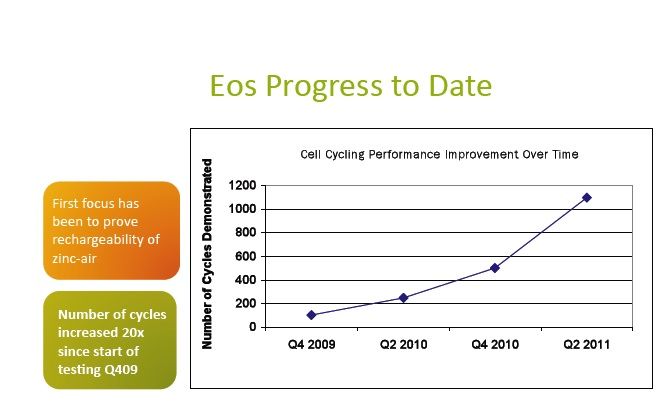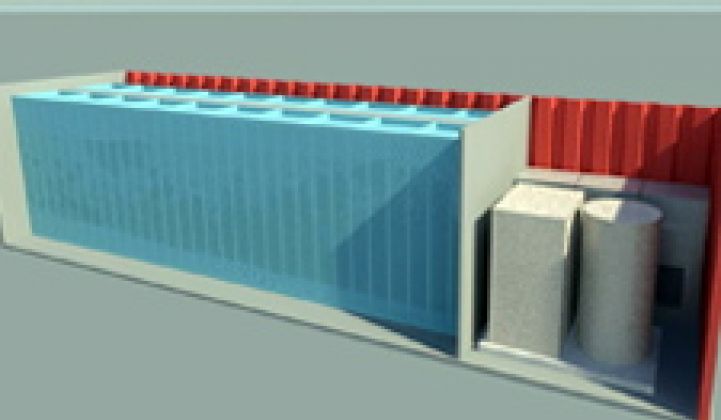Eos Energy Storage believes it might have the disruptive technology for grid-scale energy storage and has just raised a bit of funding to prove it.
Many energy experts (though not all) believe the piece missing from a reliable, renewable-energy-laden grid is energy storage. It's routinely called the "holy grail" of the grid and like the grail, exists mostly in myth, and in energy storage's case, in utility trials.
The predominant technology in grid-scale electrochemical storage is sodium sulfur in batteries built mainly by Japan's NGK, currently undergoing a setback due to accidents involving fires. Lithium-ion batteries from A123 and others are being trialed and used in a few instances in actual grid applications. And there are companies like Xtreme Power that are using lead acid batteries for grid applications.
But no real chemistry has emerged as dominant. Venture investors like Vinod Khosla believe that batteries for the grid will involve new chemistries like Pellion's magnesium ion. Kleiner Perkins is betting on sodium-ion batteries from Aquion. Kleiner Perkins and Khosla Ventures have also invested in battery startup QuantumScape.
Eos Energy Storage of Easton, PA is working with zinc-air batteries and just raised $1.8 million of a $20 million round from undisclosed investors, according to an SEC filing. This is the first outside money taken so far in what has been a firm bootstrapped by founders Michael Oster and Steven Amendola, the technologists behind the invention. Oster called the funding "strategic" and describes the technology as "not your typical zinc-air."
Zinc air has been used for primary batteries but no one has solved the cycling issue required for rechargeability. Eos claims it has. With a large patent portfolio addressing all aspects of the battery's performance, Eos claims that it has achieved more than 2,000 cycles with no performance or physical degradation and that it has moved well past the cycle life of lead acid or li-ion batteries, according to the CEO.
CEO Mike Oster claims that Eos plans to sell its initial rechargeable zinc-air battery products for $1000 per kilowatt for a six-hour battery, or $160 per kilowatt-hour. The goal is over 10,000 cycles at “a full-duty cycle and at full depth of discharge,” according to the company.
The first battery pack will be capable of storing 6 megawatt-hours of power and the system will fit in a 40-foot storage container.
Zinc is cheap at approximately $2 a kilogram, according to Gregory Zhang of the International Zinc Association. The world has reserves totaling 1.9 billion tons and produces 30 million tons a year. Revolt Technology and PowerAir have also been working with zinc for energy storage. PowerGenix has sold nickel zinc rechargeables for a few years. APET of Taiwan is working on a zinc-air battery for vehicles.
The CEO claims that the Eos zinc-air technology is non-flammable and non-toxic. The CEO said, "You could flush it down a drain; you could drink it." Compare this to the temperature management requirements of lithium-ion batteries and their susceptibility to chemical and thermal runaway.
Eos has a few electric vehicle battery ideas up its sleeve but the initial focus is on utility-scale energy storage.
Although some of the technology has been proven out, this is still an early-stage firm. The CEO claims that the firm has achieved the "right current density and the right cycle life. Now we have to optimize and test."




